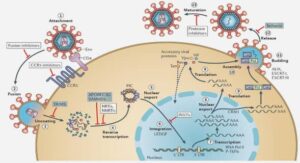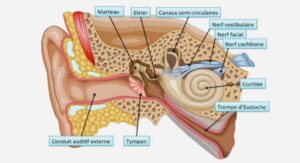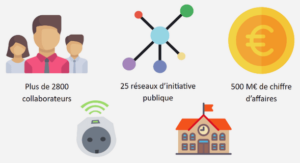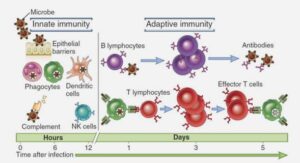Alzheimer’s disease (AD) is a type of dementia that causes various problems related to memory, thinking skills and behavior, it is ranged between 60 to 80 percent of dementia patients are suffering from Alzheimer’s (Alzheimer’s Association, 2018). Alzheimer’s symptoms can include mood and behavior changes, serious problems with memory loss, disorientation and others (Alzheimer’s Association, 2018). Over time the symptoms become more aggressive which led the patients by years to lose his cognitive skills (Alzheimer’s Association, 2018). Alzheimer’s probably progresses from many factors, such as genetics, lifestyle, and environment (Alzheimer’s Association, 2018). Moreover, scientists have considered the age as a factor where most of Alzheimer patients are 65 years old and more (Alzheimer’s Association, 2018).
In the early and middle stages of Alzheimer’s, depression is very common among the patients (Alzheimer’s Association, 2018). For the reason that Alzheimer’s can generate the same depression symptoms, detecting depression in Alzheimer’s is a challenging task (Alzheimer’s Association, 2018). For instance, apathy, impaired thinking, loss the interest in activities, trouble concentrating are shared symptoms to both Alzheimer’s and depression (Alzheimer’s Association, 2018). For the reason that there is no official test to diagnose depression in Alzheimer patients, the physicians rely on the following methods to diagnose depression: mental and physical tests, interviews with family members and medical history (Alzheimer’s Association, 2018).
Based on the above, this research aimed to help the medical communities to overcome the challenges of detecting depression in Alzheimer patients. Machine learning techniques are used to classify Alzheimer patients into two classes (depressive AD and Non-depressive AD). Three traditional Machine Learning classifiers (Random Tree, Random Forest, and Support Vector Machine) and the Artificial Neural Network are used to accomplish this task. Several audio features such as MFCC’s, Zero Crossing, and Spectral Centroid are extracted from Alzheimer’s patients’ speech. This research has two objectives, the first objective is to determine the most performant classification technique in distinguishing AD or MCI depressed patients and AD or MCI non-depressed patients. The second objective is to determine the most appropriate subset features for this task.
The proportion of older people in society has increased as a result of recent healthcare evolution. This increment has extended the prevalence of Alzheimer patients worldwide. According to (Alzheimer’s Association, 2018), it is estimated that by 2050, the number of people with Alzheimer’s dementia (65 and older) may grow to 13.5 million patients. Furthermore, healthcare costs will grow up to 1.1 trillion dollars in 2050. To minimize the costs and to help the medical community to overcome several challenges, it’s essential to find a mechanism to detect Alzheimer’s at an early stage. Several hypotheses are trying to explain the cause of Alzheimer’s, where the cause is still unknown (Alzheimer’s Association, 2018). The Amyloid hypothesis is a hypothesis that assumes the extracellular of amyloid-beta (Aβ) is the cause of Alzheimer (Hardy & Allsop, 1991). Another hypothesis, which is the genetic hypothesis, assumes that the cause of Alzheimer’s is genetic (by inheritance) (Wilson et al., 2011). According to (L. et al., 2012), detecting Alzheimer’s disease at an early stage is essential because treatment may be most useful. Because there is no tool to detect Alzheimer on an early stage, the physicians diagnose patients based on some clinical tests; those test includes physical test, Neurological exam, Medical history, and others (Alzheimer’s Association, 2018). Also, other factors aid the diagnosing process, such as the symptoms. There are around 10 signs – symptoms that can help the physician to diagnose Alzheimer According to (Alzheimer’s Association, 2018). For instance, when the patient begins to suffer from the impact of poor memory on his daily activities, or start to face difficulty in achieving the daily task, language problems, problems with abstract thinking, and other unnatural cognitive declines.
It is essential to differentiate between Alzheimer’s and Mild cognitive impairment (MCI), which is a neurological disorder that may occur in older adults who are suffering from cognitive impairments with minimal impairment in instrumental activities of daily living (Petersen et al., 2018). The clinical evaluation is necessary to diagnose MCI (Grundman et al., 2004); also, neuroimaging (Smailagic et al., 2015), blood tests, and neuropsychological testing are used on diagnosing (Morris et al., 2001). The Lifestyle considered as a factor that may reduce the risk of Alzheimer’s, people who are involved in several activities such as reading, crossword puzzles, and other intellectual activities are less risk to get Alzheimer’s disease (M. Tucker & Stern, 2011). Moreover, education may play a significant role in delaying AD symptoms without changing the duration of the disease (Paradise, Cooper, & Livingston, 2009).
Alzheimer Disease
While a certain amount of cognitive decline is part of a healthy aging process, many older seniors worldwide suffer from a sharp cognitive decline caused by Alzheimer’s disease (AD) and other types of dementia. AD, in particular, poses many challenges both at the individual and societal levels. First, it has a direct impact on patients, as well as their loved ones, because as the disease progresses, a greater and greater burden is put upon the circle of relatives, friends, and acquaintances. Second, the high number of patients exerts economic and social pressure on society since related medical care becomes more expensive. Indeed, in 2017, the estimated total costs associated with all individuals with AD or other dementias was $259 billion (Alzheimer’s Association, 2018). Furthermore, the percentage of total deaths due to Alzheimer’s disease is greater than those for both breast cancer and prostate cancer combined (Alzheimer’s Association, 2018), 1 out of 3 seniors dies of AD or other dementia types (Alzheimer’s Association, 2018).
Alzheimer’s disease usually progresses gradually, and in three general stages. At the Mild (early) stage, patients may still be able to accomplish familiar tasks, and might notice mild cognitive changes such as difficulty remembering the names of new people (Alzheimer’s Association, 2018). The disease then reaches the Moderate stage, which can last many years.
During this stage, symptoms evolve, and worsen; the patient feels moody, is more forgetful, and has more and more difficulty accomplishing familiar tasks. Overall, the patient is losing the ability to perform regular daily tasks, including those involving several mental skills such as planning and keeping track of recent events. The disease gradually progresses until it reaches a Severe stage, in which patients lose the ability to speak and respond to the environment.
Diagnosing AD is notoriously tricky; with the assessment failure percentage reaching as high as 50% (Boise, Neal, & Kaye, 2004). One of the challenges is identifying the early signs of AD among patients that are believed to be in the Mild Cognitive Impairment (MCI) stage. According to (Gauthier et al., 2006), several studies suggest that the percentage of MCI among people 65 and older ranges between 3 and 19%. With MCI, changes are not severe enough to affect daily life functions. However, people diagnosed with MCI are more likely to develop Alzheimer’s disease than people without MCI, and the rate at which MCI will progress to Alzheimer’s disease lies between 10% and 15% annually(Grundman et al., 2004).
Depression
While “feeling sad” is a typical transitional emotion, depression is a severe medical illness since it profoundly affects how patients feel, the way they think, and how they act. This illness can lead patients to lose their motivation to carry out normally enjoyable activities or to lose the ability to function at work or home. One out of fifteen adults can be affected by depression in any given year, and one of six people will experience depression at some time in their life (American Psychiatric Association, 2013).
INTRODUCTION |






